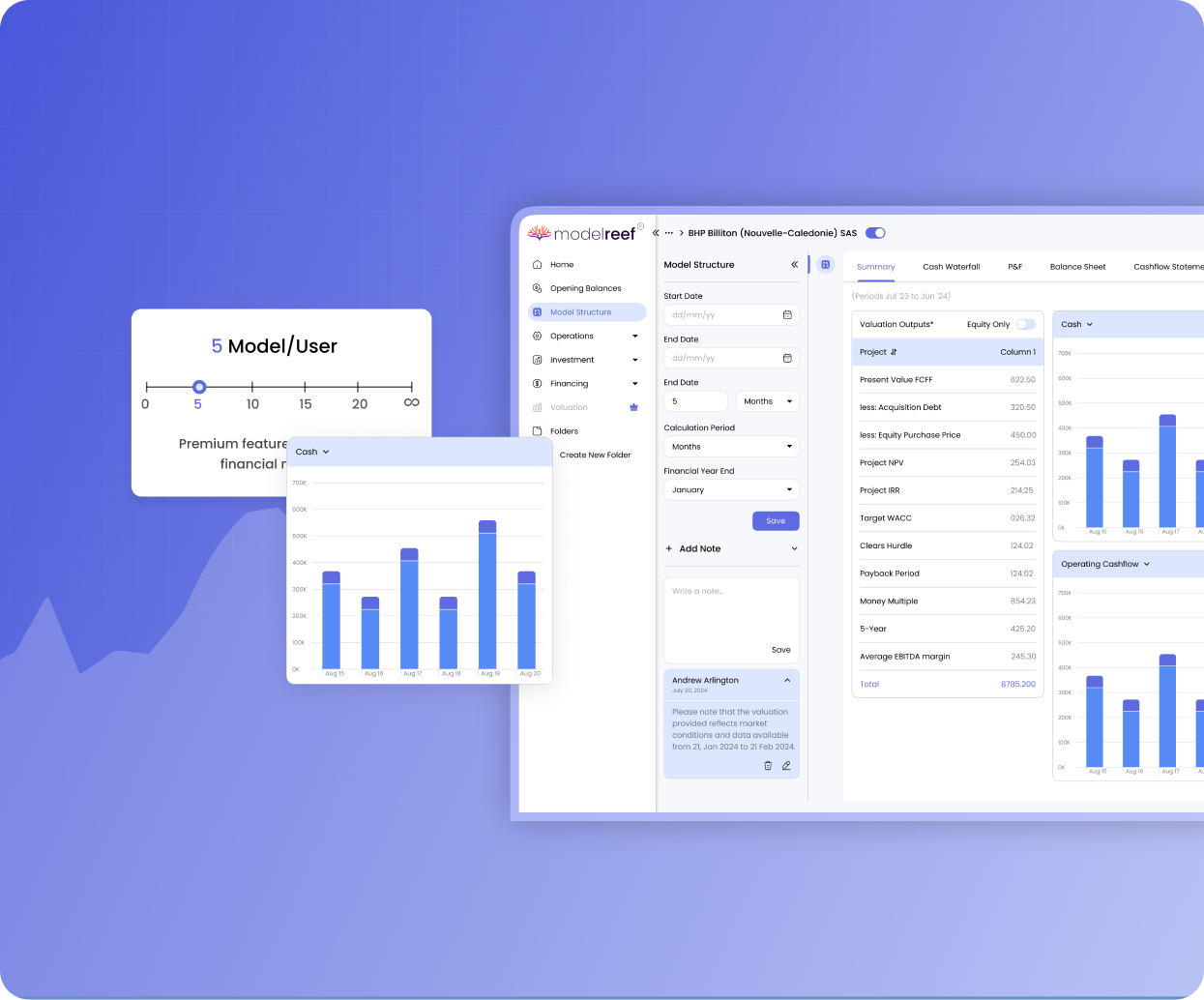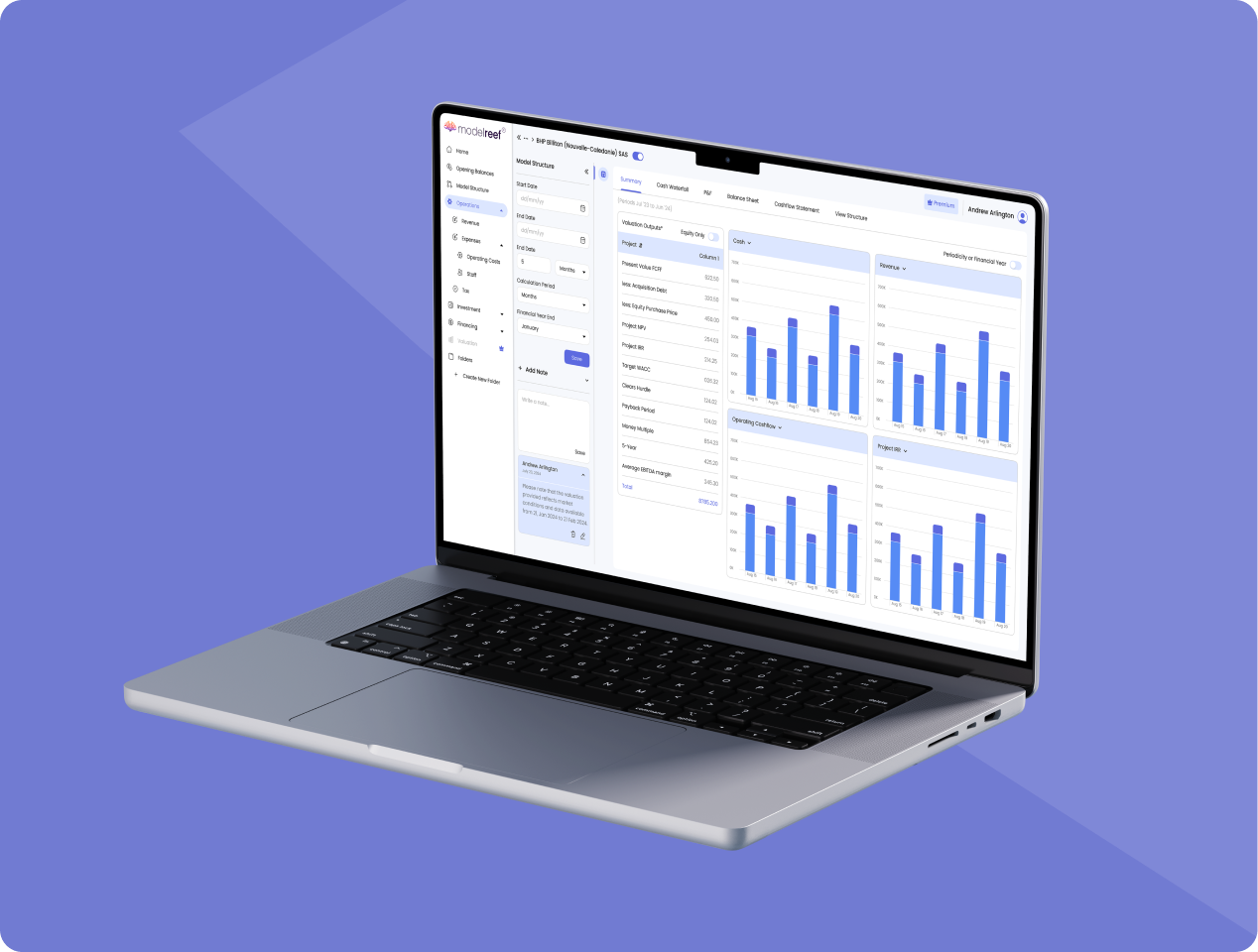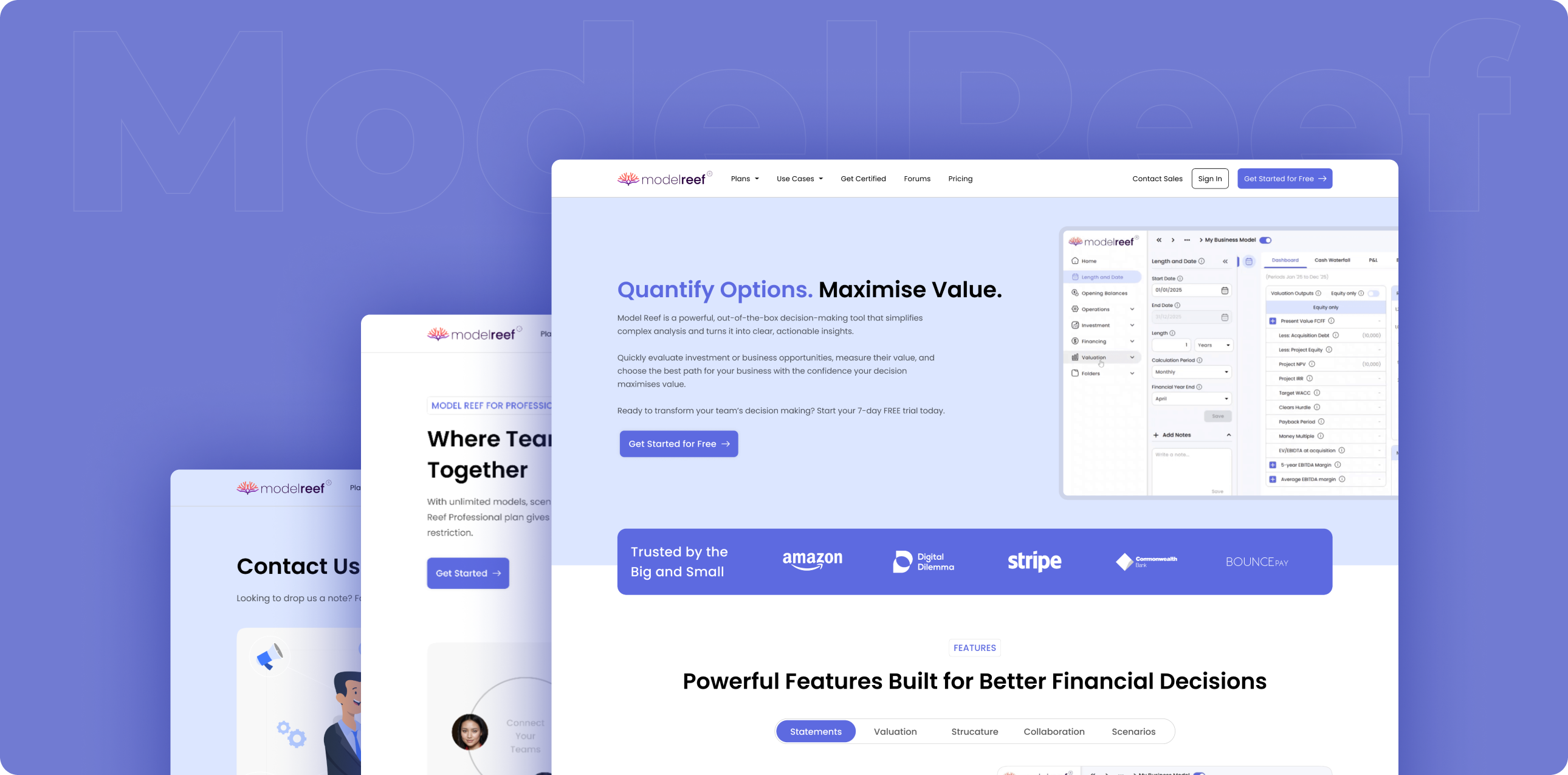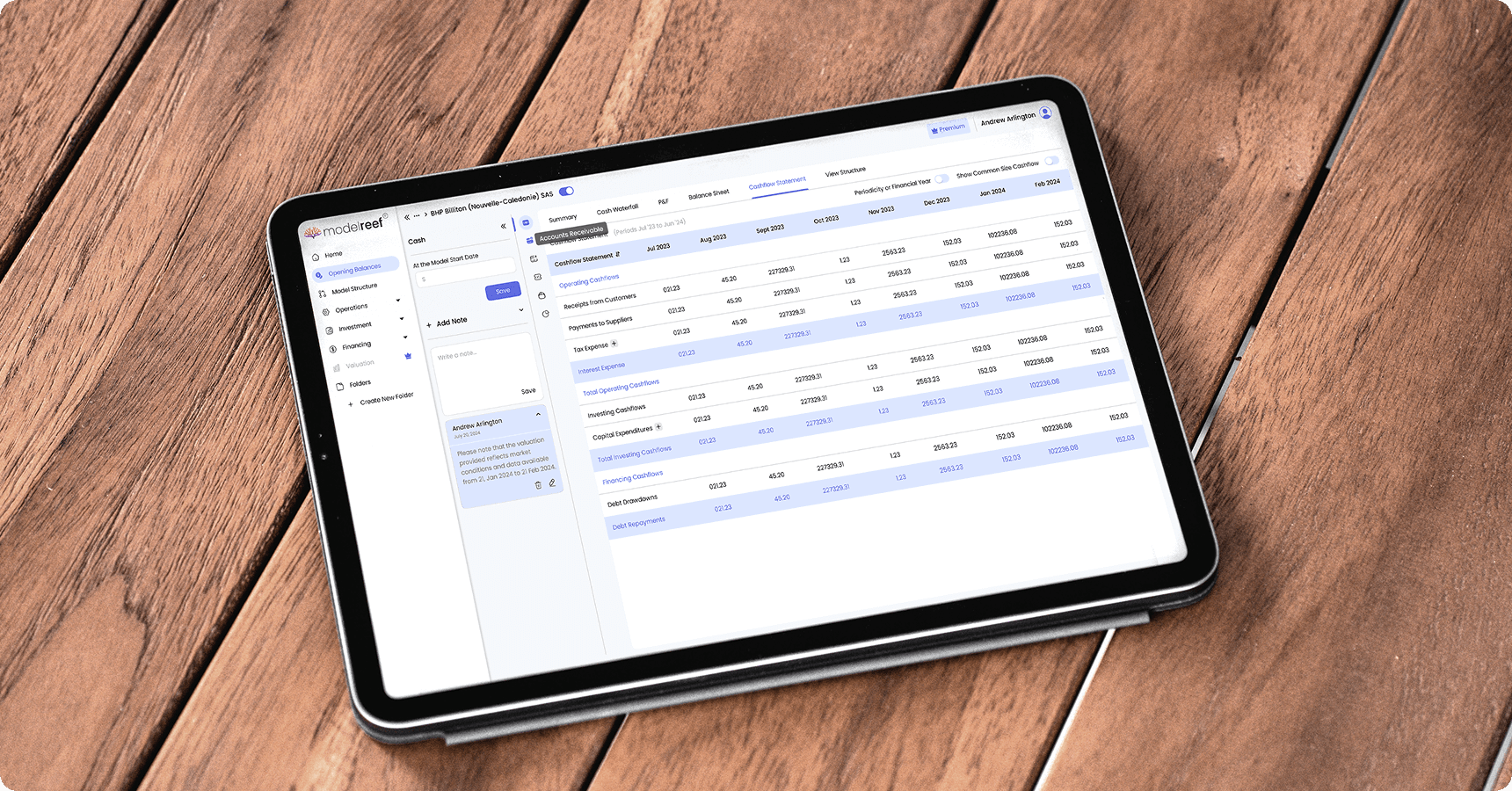Model Reef: A Financial Forecasting Platform Built for Real-World Chaos
Model Reef is a corporate financial planning and cash management solution that has brought peace to many CFO’s lives. Financial managers and CFOs no longer need to sweat watching a spreadsheet crash at a crucial juncture. When your board members want growth projections by Monday, your team will not be stuck reconciling data from seven different systems, thanks to Model Reef.
Model Reef transforms financial forecasting from a spreadsheet nightmare into something as intuitive as checking the weather. Partnering with Digital Dilemma, they set out to help businesses predict their financial future with the same ease as scrolling through a newsfeed.




